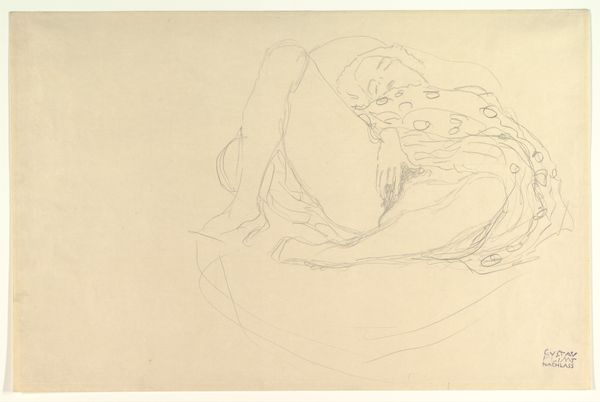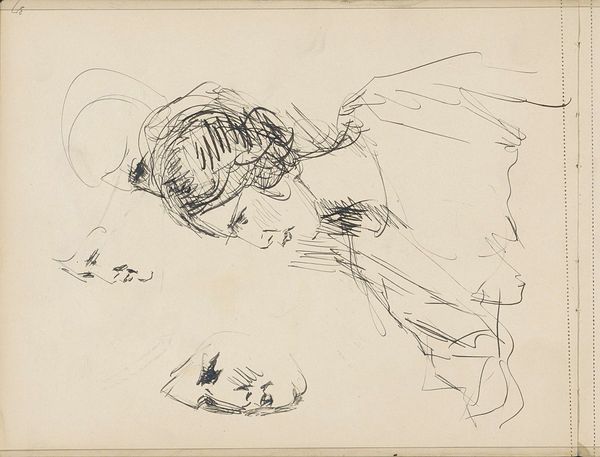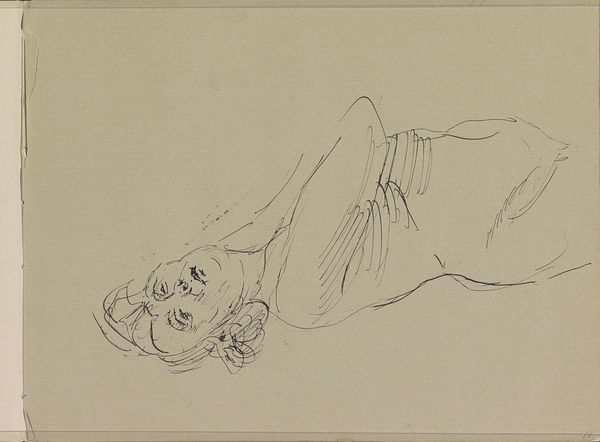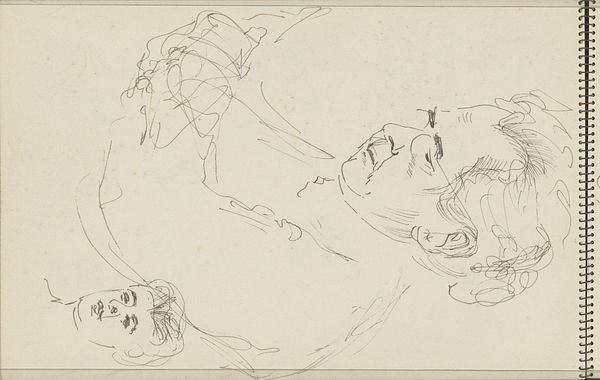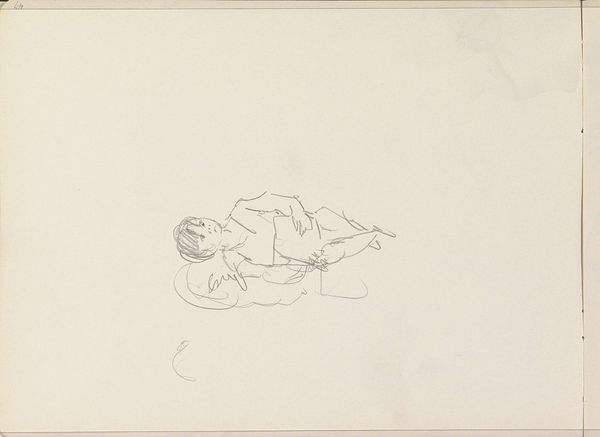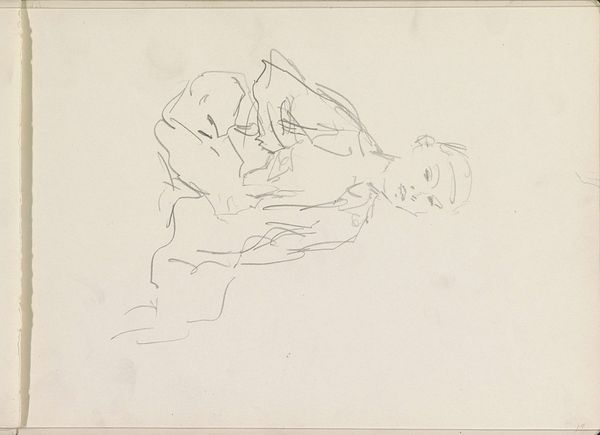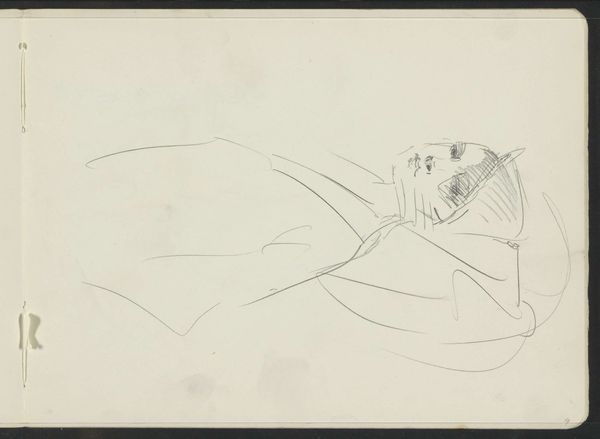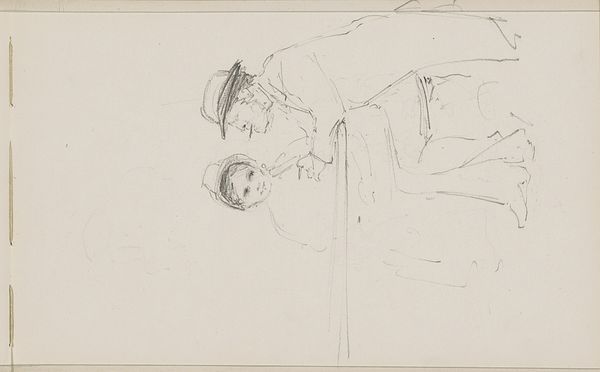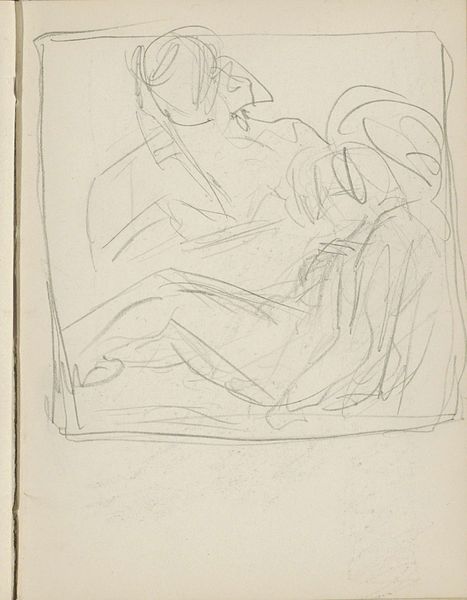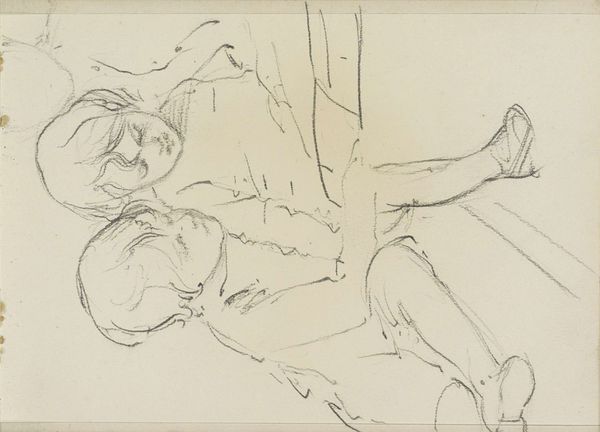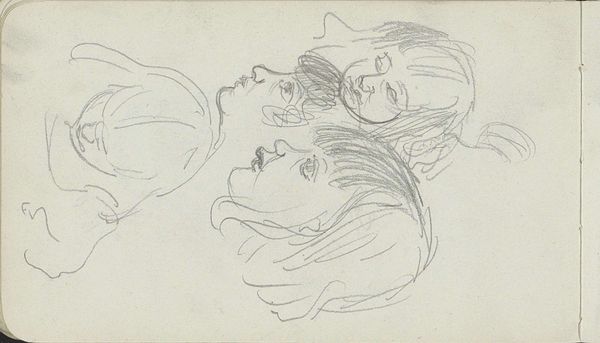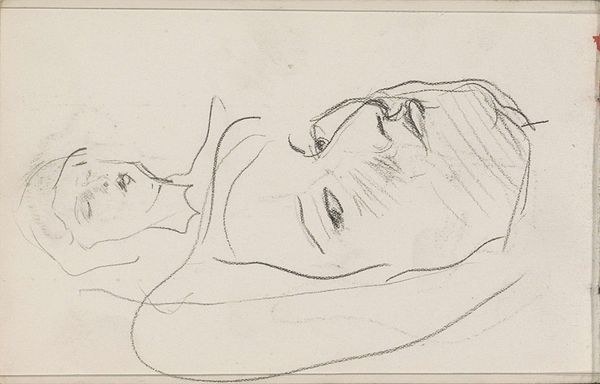
#
imaginative character sketch
#
light pencil work
#
personal sketchbook
#
idea generation sketch
#
sketchwork
#
character sketch
#
sketchbook drawing
#
storyboard and sketchbook work
#
sketchbook art
#
initial sketch
Copyright: Rijks Museum: Open Domain
Curator: Up next, we have Isaac Israels’ “Twee vrouwen in omarming,” or “Two Women Embracing,” which was created sometime between 1875 and 1934. Editor: It has the look and feel of a fleeting observation, a candid moment caught in pencil. There's a sensitivity to it, a tenderness hinted at by the embrace. Curator: Precisely. And look at the material. This isn’t some grand oil painting meant for the salon. It's a quick sketch, likely from a personal sketchbook. The visible pencil lines are very delicate, suggesting it may have been preparatory work, perhaps for a larger piece or simply an exercise. We see evidence of process, a glimpse into the artist’s hand and mind. Editor: I'm fascinated by the depiction of women. How do you think the societal context of Israels’ time might inform our understanding? Were intimate portrayals like this accepted, or was there a subtle rebellion at play in depicting the emotional closeness? It makes me consider what kinds of depictions of queer identity may have been at play behind closed doors and perhaps hinted at. Curator: It’s vital to think about the position of this artwork within its original environment. The art market had begun opening to a wider audience and the traditional hierarchy between acceptable themes in artwork and lower ones began eroding. How did access to the means of material production like drawing supplies help make these smaller forms and intimate moments visible and shareable? Editor: Also consider the place of Rijksmuseum in promoting a particular view on visual artistry that helped normalize such artists’ works at the time as acceptable viewing and cultural expression, though Israels passed before this was prominently displayed. It offers a look at changing sensibilities and increasing interest in representing complex and potentially marginalized lives of communities around the world. Curator: Looking at Israels' piece then, the apparent ease of the sketch shouldn't blind us to the conditions under which this kind of representation became even possible. Editor: Well, it definitely deepens my understanding and appreciation for a simple embrace. Thanks for putting it in context. Curator: Indeed. Context is key to unveiling the significance of the material and technique itself.
Comments
No comments
Be the first to comment and join the conversation on the ultimate creative platform.
